
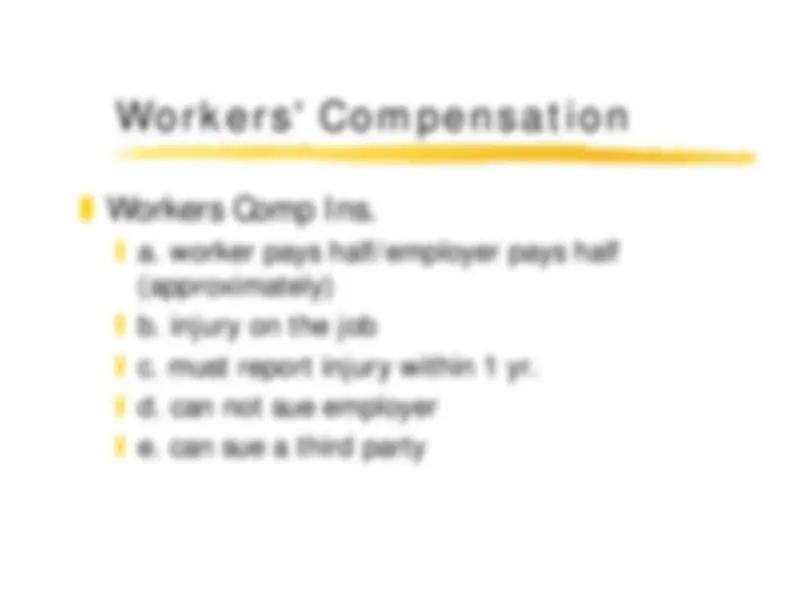
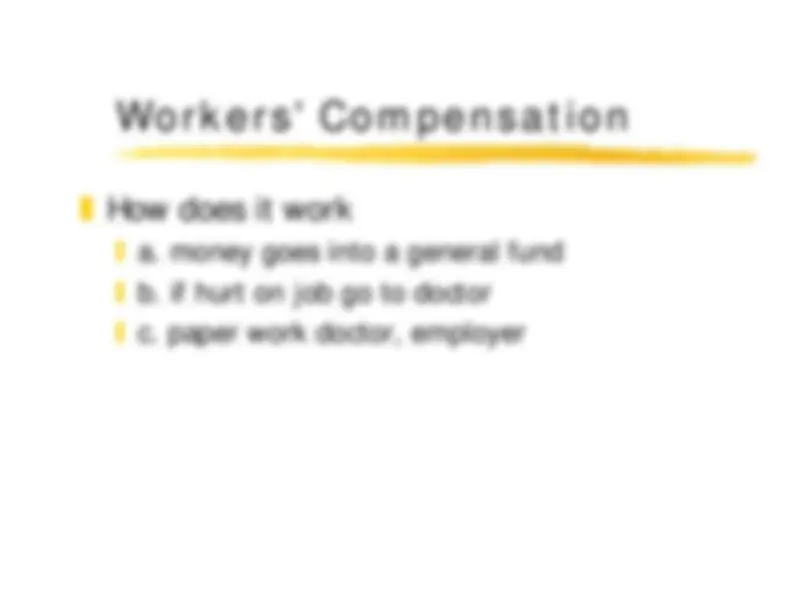
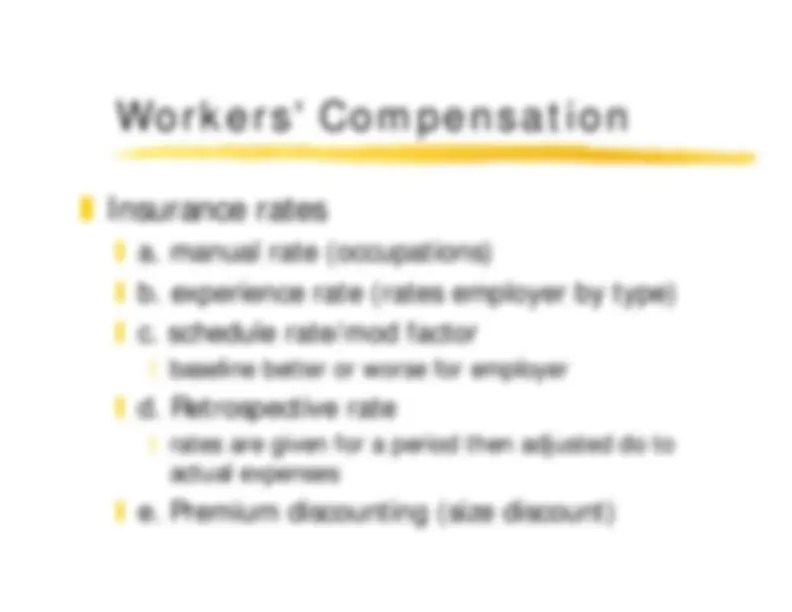
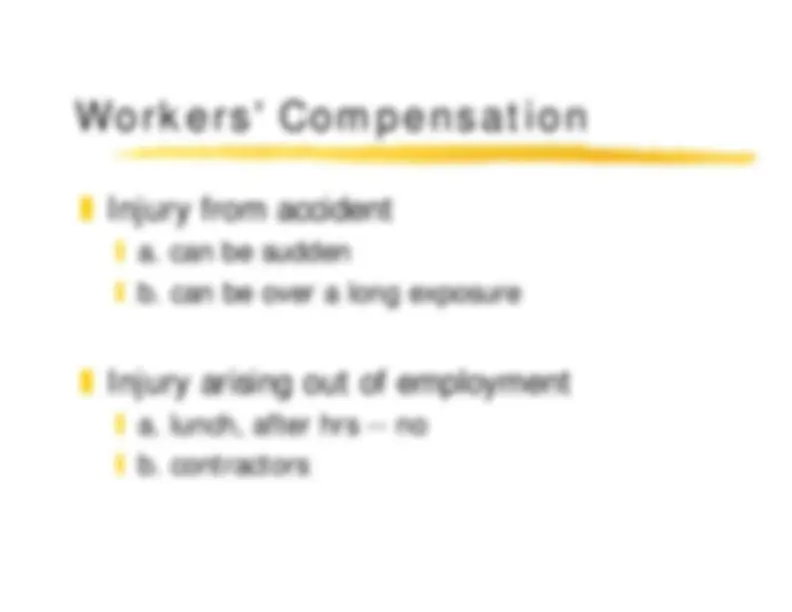
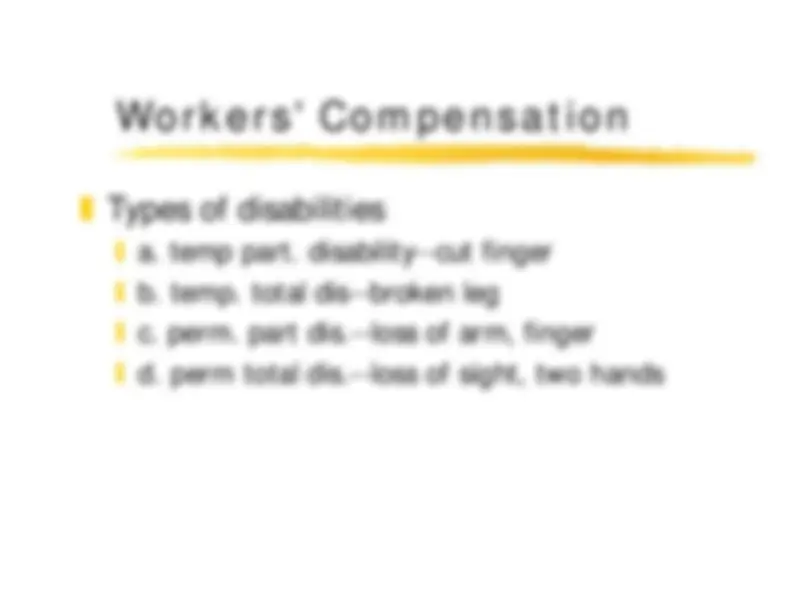
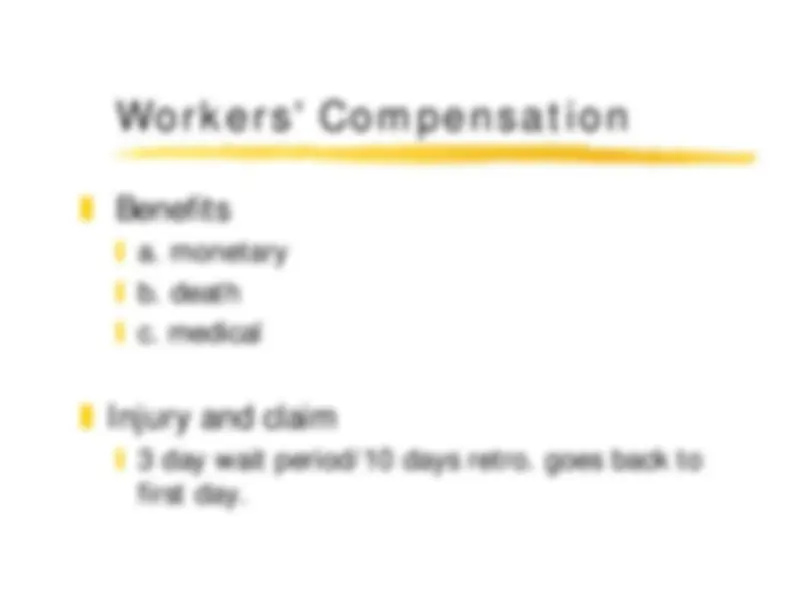


Study with the several resources on Docsity

Earn points by helping other students or get them with a premium plan


Prepare for your exams
Study with the several resources on Docsity

Earn points to download
Earn points by helping other students or get them with a premium plan
Community
Ask the community for help and clear up your study doubts
Discover the best universities in your country according to Docsity users
Free resources
Download our free guides on studying techniques, anxiety management strategies, and thesis advice from Docsity tutors
An overview of workers' compensation, a no-fault insurance that recompenses workers for losses incurred on the job. It covers the six major objectives of workers' compensation, the insurance rates, requirements to receive benefits, injuries not considered, types of disabilities, and benefits. The document also includes a brief history of workers' compensation and the reasons for increasing premium costs.
Typology: Papers
1 / 11

This page cannot be seen from the preview
Don't miss anything!







y a. employee must take employer to court and prove negligence very difficult because of y b. Three common laws: Contributory negligence, fellow servant rule, and assumption of risk
y a. reasonable income and medical y b. reduce court delays, costs, etc. y c. relieve charities of money drain y d. cut-out lawyers and witnesses y e. employer interest in safety y f. study causes of accidents
y a. money goes into a general fund y b. if hurt on job go to doctor y c. paper work doctor, employer
y a. manual rate (occupations) y b. experience rate (rates employer by type) y c. schedule rate/mod factor x baseline better or worse for employer y d. Retrospective rate x rates are given for a period then adjusted do to actual expenses y e. Premium discounting (size discount)
y a. intoxication y b. self inflicted y c. willful y d. arose from altercation (injured party started it)
y a. can be sudden y b. can be over a long exposure
y a. lunch, after hrs -- no y b. contractors
y a. monetary y b. death y c. medical
y 3 day wait period/10 days retro. goes back to first day.
y a) First WC legislation: Prussia 1838 for railroad employees y b) USA 1908 extra hazardous occupations y c) all states by 1948
y a) medical costs "skyrocketing" technological developments (expensive medical systems) y Malpractice insurance.